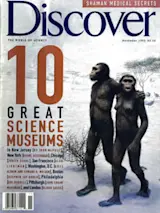When my travels take me to Washington, D.C., I sometimes find myself walking the galleries and exhibits of the National Air and Space Museum of the Smithsonian Institution. This national treasure celebrates the adventure of exploring the unknown, from Leonardo da Vinci’s sketches of mechanical wings, through the balloon flights of Joseph-Michel and Jacques-Etienne Montgolfier and the efforts of the Wright brothers, on up through the barnstorming days of early aviation and our more recent excursions into space. There’s a lot of my own past in this museum, as well as a glimpse of what the future could be.
My childhood was filled with the pioneers of aviation: back in the 1920s my father was an active Army Air Corps pilot, and pilots, balloonists, plane designers, and airline executives were frequent visitors to our home in New Jersey. Thanks to my father’s career, I experienced the exhilaration of flight for ...














